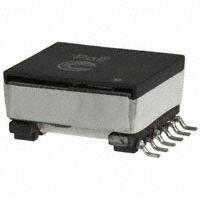Power-over-Ethernet (PoE) Application Notes
PoE - the Cost-Effective Means of Power Supply In addition to data communications between the two devices, Powerover-Ethernet (PoE) enables an Ethernet Switch/Hub to power a remote device over an existing LAN cable. Without PoE, any remote device needs to be powered independently. Typically, device power is derived from an AC-DC adapter or at board level inside the device. This adds cost and requires locating the device near a source of AC power. Device installation is further complicated by different safety codes, AC voltages and wall plugs around the world. PoE avoids these problems by supplying low-voltage DC power directly to the Powered Device (PD) from the Power Sourcing Equipment (PSE) that is located in the Ethernet Switcher or mid-span Hub and eliminates the complexity of AC power sources. To ensure that all equipment is protected and devices operate properly when connected, the IEEE established a universal standard (IEEE802.3af). This specifies the power requirements of the PSE and the PD, and the communication protocol between the two regardless of manufacturer or configuration. Traditional Power-over-Ethernet The 12.95W power limit was adequate for IP telephony when IEEE802.3af was initially approved in 2003. Network cameras, were initially the most prevalent application enabled by the Power-overEthernet standard. However, the popularization of WLAN applications triggered developers’ and marketers’ inventiveness for creating more powerhungry derivative devices, such as Video IP Phones, Multi-channel WLAN Access Points (like the ones in the IEEE802.11n upcoming MIMO standard) and Pan-Tilt-Zoom IP Cameras. All these devices typically require between 13W and 30W - more than the normally available 13W. Enhancing Power-over-Ethernet In December, 2004, the IEEE802 established a PoEPlus group to study the market needs and possible technical solutions to address higher power applications while maintaining backward compatibility with the original standard. In September, 2005, the group set and approved, as binding, objectives for the IEEE802.3at Power-overEthernet Enhancements. One of the main objectives was providing maximum power to PDs as allowed within practical limits of at least 30W.
Converter Topology Choices: Flyback Vs. Forward
Flyback or forward converter topologies are normally used in a powered device DC-DC converter, depending on the PD’s voltage and current requirements.
Flyback Topology (See Figure 1) Benefit: Lowest cost for 12V) and for applications requiring lowest cost. Advantages:
• Output isolated from input. • No output inductor required.
Disadvantages: Higher output ripple current results in higher output capacitor cost and medium efficiency due to higher peak and rms currents.
Input +
Vin
+ v L _ Vx
Output + C Vo _
_
Figure 1. Transformer Flyback Topology
�Forward Topology (See Figure 2) Benefit: Lowest cost for >6A output currents. When to Use: Typically for output voltages less than 12 V. Recommended for multi-output voltages (
很抱歉,暂时无法提供与“POE4W3X5.0-R”相匹配的价格&库存,您可以联系我们找货
免费人工找货